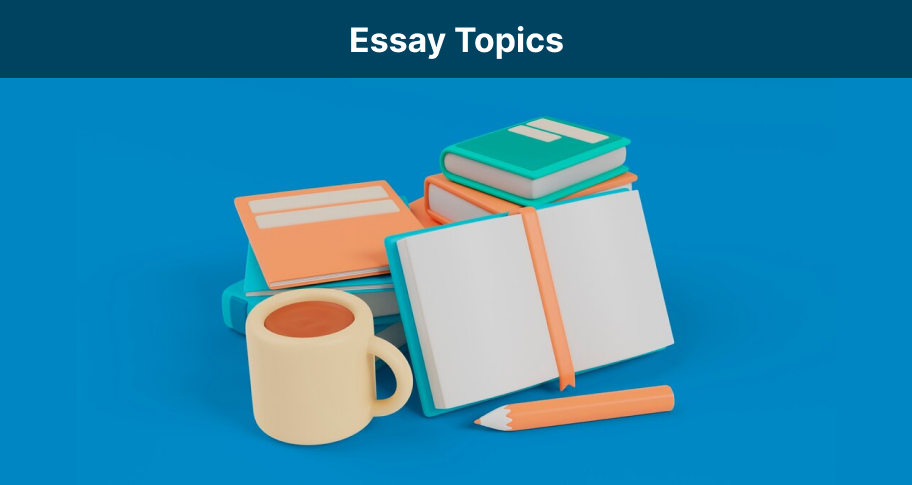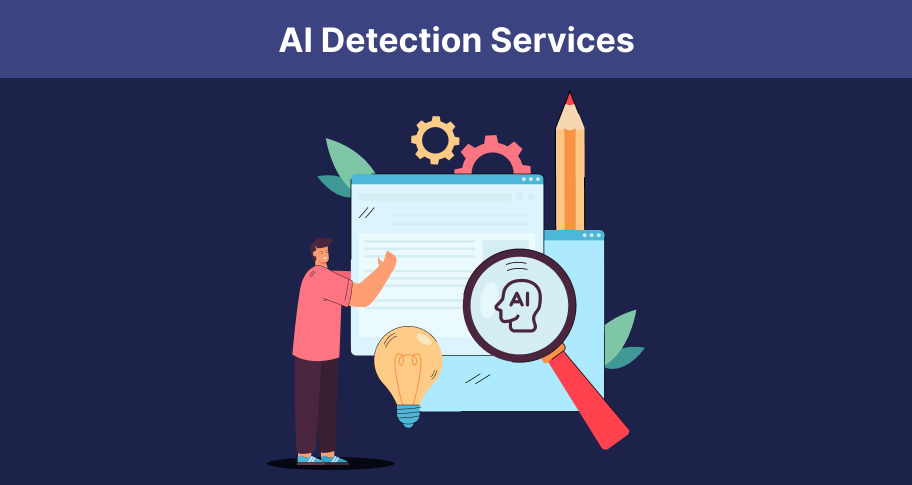[download link]
A relatively advanced type of expository essay, an analytical essay is in-depth, asking you to pick apart, dissect, and discuss anything from a work of art or literature to a public policy initiative or a historical event.
View 120,000+ High Quality Essay Examples
Learn-by-example to improve your academic writing
Analytical essays ask you to put your thinking caps on. The best analytical essays are thoughtful and insightful.
Instead of summarizing the text, you critique it.
Instead of just saying what caused an event, you say why.
With an analytical essay, you are asked to read into everything with a critical eye.
Writing an analytical essay is your first step towards becoming a scholarly writer. This article will introduce you to how to write an analytical essay from start to finish.
What Is An Analytical Essay?
There are many types of analytical essays, depending on the class. The most common include:
- Rhetorical analysis
- Literary analysis
- Formal analysis
- Policy analysis
- Historical analysis
All analytical essays should follow the basic structure of a five-paragraph essay format. The five-paragraph essay format follows the following outline:
I. Introduction
II. First Body Section
III. Second Body Section
IV. Third Body Section
V. Conclusion
Remember, even if your essay does not have exactly five paragraphs, you can still create a format with an introduction, body, and conclusion.
Rhetorical Analysis Essay Format
A rhetorical analysis asks you to analyze someone else’s argument, speech, or essay. You can also do a rhetorical analysis on an advertising campaign or a work of literature.
Rhetoric refers to the tools of argument or persuasion.
When you write a rhetorical analysis essay, you are analyzing someone else’s argument to determine its overall effectiveness, or the types of rhetorical strategies being used.
For example:
Analyze the effectiveness of Dr. Martin Luther King’s “Letter From a Birmingham Jail”
Analyze how Jonathan Swift uses irony and satire in “A Modest Proposal”
Analyze the use of gender stereotypes in a car commercial.
In a rhetorical analysis, you are focusing on the primary source: the original work of art or literature, the advertisement, or the political speech.
Questions to ask yourself will be:
What rhetorical strategies or techniques does the author use?
How effective are those strategies and techniques, and why?
The three main rhetorical strategies or techniques include pathos, ethos, and logos.
Pathos refers to emotional appeals:
“All the children are dying—your donation will help save them now!”
Ethos refers to appeals to ethical credibility, which often entails celebrity:
A basketball player is the marketing spokesperson for a Big and Tall store.
Logos refers to facts, logic, and statistics:
Although they comprise only 9% of the population of Los Angeles, African Americans comprise 39% of the city’s homeless population.
The trickiest part to writing a rhetorical analysis is remembering that you are analyzing the primary source.
You are not using the primary source as a springboard to discuss your own opinions. That approach would be more like an argumentative essay or a persuasive essay.
A rhetorical analysis is a type of analytical essay that asks you to critique a primary source.
The thesis statement for a rhetorical analysis will be your strong stance on how effective the author was, or what tools the authors used to achieve his or her goals.
Literary Analysis Essay Format
If you ever take an English literature class, you will be asked to write a literary analysis at some point.
A literary analysis asks you to critically engage a work of literature—the primary source text.
However, you may also be asked to include secondary sources in your literary analysis. Secondary sources are scholarly articles that analyze the same primary source text. In the field of literature, secondary sources are referred to as literary criticism.
In a literary analysis, you will look for things like:
- Diction
- Format
- Symbolism
- Motif
- Gender
- Race
- Class
- Historical context
- Theme
- Other works by the same author
With a literary analysis, you come up with a strong argument about the primary source.
For example:
Because her female protagonist in “The Yellow Wallpaper” is trapped in a children’s nursery, Charlotte Perkins Gilman overtly critiques not just patriarchy but the social institution of marriage.
With this thesis, you are letting the reader know that you are going to discuss the way Gilman uses the motif of the nursery and the symbol of a prison as a means of critiquing patriarchal norms and institutions.
Formal Analysis Essay Format
A formal analysis is commonly assigned in an art, architecture, theater, or music classes.
The term “formal” in this case refers to the form the object takes: which will of course be mainly visual in the visual arts and mainly sonic in music.
Examples of formal analysis would be:
A formal analysis of a dance performance including its choreography and stage production
A formal analysis of a famous painting
A formal analysis of a classical composition
A formal analysis of a landmark cathedral
When you write a formal analysis, you will follow the five-paragraph essay format and take a strong stance in your thesis statement.
For example:
Van Gogh’s vivid color palette and intense brush strokes contradict the otherwise peaceful nature of the still life scene, revealing the artist’s conflicted mental state when he painted “Irises.”
With visual arts including architecture and performance art, you will take into account everything your eyes can see including line, composition, color, size, shape, and movement.
With music, you will take into account instrumentation, pauses, crescendo, intensity, harmony, and rhythm.
With most formal analyses, you can also take into account culture and history in addition to the manifest content of the work of art, music, or architecture. For example:
The flying buttresses, tall spires, and ribbed vaulting make the Chartres cathedral emblematic of French Gothic architecture.
[related essays]
Policy Analysis Essay Format
A policy analysis essay is common in political science courses. When you write a policy analysis, you will follow the basic elements of an argumentative essay including having a strong thesis statement.
The goal of a policy analysis exercise can be either to critique an existing policy and make recommendations for change, or to analyze a specific social or political issue and propose policy changes.
Topic examples for a policy analysis paper:
Analyze the Affordable Care Act and make recommendations for improvement.
Propose solutions to homelessness in your community.
Respond to arguments for and against gun control, making specific policy recommendations for your state.
Historical Analysis Essay Format
History classes will invariably include writing assignments related to specific people, places, and events.
Sometimes when you write a historical analysis, you may find it similar to the process of a cause and effect essay.
Topic examples:
Discuss how Hitler came to power.
How did the War of 1812 shape Canadian history, identity, and culture?
What role did the Ottoman Empire play in obfuscating the differences between Sunni and Shia communities?
A historical analysis can also be similar to a compare and contrast essay.
For example:
Some historians have suggested that the United States has been following a similar trajectory as ancient Rome; discuss.
Analyze the different effects of the War of Independence on the United States and Great Britain.
How to Write an Analytical Essay
Come Up With a Topic
You start every analytical essay with either a prompt or a general subject area. Sometimes, coming up with the topic is the most difficult part of essay writing. When you are offered a particular essay prompt, it may be easier to get started on the next step of writing: brainstorming.
When you are already familiar with the subject area, you may be able to skip the brainstorming process altogether and skip straight to outlining or perhaps right to the rough draft.
Essay Prompt Examples:
Analyze the function of magical realism in Gabriel Garcia Marquez’s novel One Hundred Years of Solitude.
Compare and contrast the different fiscal or foreign policy strategies India and China have used over the past twenty years.
Especially when you are starting with nothing but a broad subject area, you will want to brainstorm some ideas first before you actually start composing your essay.
If your instructor asked you to choose your own topic, start with what you know or are interested in. Then, start with a Google search on various subjects to see how much information you can find.
| Broad Subjects | Narrow Subjects |
| Painters | Picasso |
| Sculptors | Rodin |
| Authors | Hemingway |
| Social Issues | Poverty |
| Historical Events | The English Civil War |
| Advertising Campaigns | Nissan |
Brainstorm
Before you actually start writing whole sentences and paragraphs, take a few minutes at least to settle and gather your thoughts.
Brainstorming and other prewriting exercises like outlining [A4] are not wastes of time. On the contrary, these exercises save you time and trouble.
A good essay outline or brainstorming session will make your writing flow easier.
You can brainstorm any way you like: in a study group with friends, jotting down ideas, using abstract methods like drawing, or using techniques like clustering.
Analytical Essay Outline
Outlining your essay first helps you stay on track and organized. You will get much better results with your essays if you start with an outline.
In some classes, you will be expected to hand in your outline.
Analytical Essay Outline Example
I. Introduction
A. Romantic literature frequently represented a turning away from modernization and a sentimental longing for a simpler life more connected to the natural world.
B. Mary Shelley’s dire warning of tampering with nature and playing God in Frankenstein reflects the unexpressed fears of modernization and rapid industrial development.
II. Body paragraph/section
A.
Analytical Essay Format
An analytical essay follows the essay structure used in the five-paragraph essay as follows:
I. Introduction
A. Lead-in or hook
B. Background information about the main ideas.
1. Main idea one
2. Main idea two
3. Main idea three
C. Thesis Statement: This happens because of main idea one, main idea two, and main idea three.
II. Body Paragraph/Section One
A. Topic sentence: The main idea for this paragraph
1. Will relate to main idea one
2. Will show how main idea one proves the thesis
B. Reason One
1. Evidence/direct citation to support reason one
2. Explanation of the evidence/citation
C. Reason Two
1. Evidence/direct citation to support reason two
2. Explanation of the evidence/citation
D. Sum up the main idea for this paragraph to transition to next.
III. Body Paragraph/Section Two
A. Topic sentence: The main idea for this paragraph
1. Transition from main idea one (eg. “In addition to___, this is also a factor”)
2. Will show how main idea two proves the thesis
B. Reason One
1. Evidence/direct citation to support reason one
a) Use parenthetical in-text citations or footnotes
2. Explanation of the evidence/citation
C. Reason Two
1. Evidence/direct citation to support reason two
a) Use parenthetical in-text citations or footnotes
2. Explanation of the evidence/citation
D. Sum up the main idea for this paragraph to transition to next.
IV. Body Paragraph/Section Three
A. Topic sentence: The main idea for this paragraph
1. Transition from main idea two (eg. “In addition to___, this is also a factor”)
2. Will show how main idea three proves the thesis
B. Reason One
1. Evidence/direct citation to support reason one
a) Use parenthetical in-text citations or footnotes
2. Explanation of the evidence/citation
C. Reason Two
1. Evidence/direct citation to support reason two
a) Use parenthetical in-text citations or footnotes
2. Explanation of the evidence/citation
D. Sum up the main idea for this paragraph to transition to conclusion.
V. Conclusion
A. Summary thesis statement: This happens because of main idea one, main idea two, and main idea three.
B. Why this matters or what it implies for future research
Although a title page is not always warranted, you may want to include a title page.
Similarly, some papers require headers, footers, or page numbers.
Almost all analytical essays will include a bibliography, such as a References or Works Cited page. All citations or in-text parentheticals used in the body of the paper will include a corresponding entry in your bibliography.
Make sure you follow all the directions and use the preferred citation style such as APA, MLA, or Chicago Style.
Analytical Essay Outline Example
I. Introduction
A. Mary Shelley’s novel Frankenstein is more than just a work of gothic horror fiction.
B. Shelley’s novel encapsulates Romanticism.
1. The Creature symbolizes the way human beings alienate each other through the process of Othering.
2. The setting in winter symbolizes coldness in the human spirit, and the longing for warmth and comfort.
C. Mary Shelley uses powerful symbolism and imagery to show how faith in technology and science leads to alienation, isolation, and existential angst.
II. Body Section One
A. Topic sentence: The creature’s motherless birth makes it disconnected from the rest of humanity.
III. Body Section Two
A. Topic sentence: The setting of the novel is in the dead of winter, creating the perfect atmosphere of cold, isolation, and hibernation.
IV. Body Section Three
A. Topic sentence: The father’s fear of his own creation represents the failure of patriarchal norms to generate a warm and caring human race.
V. Conclusion
A. Mary Shelley shows how the vehicle of Romantic and Gothic fiction enables powerful social and political commentary, via the use of imagery and symbols related to human isolation and alienation.
Analytical Essay Example
Mary Shelley created one of the most iconic characters in literary history: Frankenstein’s creature. Although film adaptations of the story and pop culture appropriations of the original Shelley story have turned the creature of Dr. Frankenstein into a supernatural horror monster, the author’s original text sends quite a different kind of message to readers. Shelley’s novel Frankenstein is more than just a work of gothic horror fiction. In fact, Shelley’s novel encapsulates Romanticism: a return to nature and a longing for a life that is simpler than what modernity and its trappings like urbanization and industrialization provide. In Shelley’s novel, an ambitious scientist creates life: essentially an act of god. Yet the life he creates turns out to be monstrous: so ugly and hideous to the eye that his own “father” abandons him. The Creature symbolizes the way human beings alienate each other through the process of Othering. Likewise, the Creature represents the way that science and technology can be detrimental for human spiritual and ethical growth. The setting of the novel in winter symbolizes coldness in the human spirit, and the longing for warmth and comfort. Mary Shelley uses powerful symbolism and imagery to show how faith in technology and science leads to alienation, isolation, and existential angst.
The creature’s motherless birth makes it disconnected from the rest of humanity. Born in an insolated laboratory to a self-seeking Dr. Frankenstein, the Creature is abandoned instantly after its birth. Dr. Frankenstein is repulsed by the Creature: “How can I describe my emotions at this catastrophe, or how delineate the wretch whom with such infinite pains and care I had endeavoured to form?” (Chapter 5). Dr. Frankenstein clearly does not care that the Creature he created has feelings, and hastily abandons it to the cold. When Victor Frankenstein and his Creature reunite one day in the woods, the Creature proves his humanity through heartfelt tales of his alienation and abandonment, yet nothing comes from his pleas. The only person that warms to him is a blind man, who cannot judge the creature based on his appearance alone. Also, given that the Creature was not born of a woman, he is inhuman. Shelley may also be offering a feminist message that shows that only women should have the power to bring life into the world. When men usurp that power, they end up creating monsters. Thus, Shelley shows how people alienate and isolate each other through a process of Othering.
The setting of the novel is in the dead of winter, creating the perfect atmosphere of cold, isolation, and hibernation. The Creature is the ultimate symbol of Otherness. He is not fully human, even though he has feelings. The Creature has superhuman features and the ability to destroy life with his rage. Through the Creature, Shelley shows how people who are oppressed and disenfranchised come to view life with bitterness, resentment, and despair, perhaps leading to violence and aggression. The Creature can never be accepted by his fellow beings, and ends up killing wantonly out of revenge. Yet readers sympathize a lot more with the Creature than with Dr. Frankenstein because of the way Shelley uses potent symbolism and imagery.
Science is what enables Dr. Victor Frankenstein to create life from nothing, a power that is typically considered divine and spiritual in nature. Shelley does not necessarily suggest that science is evil, but that placing too much faith in science and not enough in moral virtues can undermine the human spirit. The reader in some way admires Dr. Frankenstein’s obsession with his work, yet deplores his coldness, his inability to connect with or feel any compassion for the life that he created. The reader wonders if Dr. Frankenstein would behave the same way towards a child that was born with a genetic abnormality. The father’s fear of his own creation represents the failure of patriarchal norms to generate a warm and caring human race.
Mary Shelley shows how the vehicle of Romantic and Gothic fiction enables powerful social and political commentary, via the use of imagery and symbols related to human isolation and alienation. Through the central symbol of a creature who is not-quite-human, Shelley shows how patriarchal norms may prevent natural human connection. Similarly, Shelley sets the novel in winter to accentuate coldness and lack of compassion. Although Frankenstein is not a polemic against science, Shelley does use the vehicle of Dr. Frankenstein to warn readers about losing their humanity through an overly materialistic life.
References
Shelley, Mary. Frankenstein. eBook. https://www.gutenberg.org/files/84/84-h/84-h.htm#
Conclusion
An analytical essay can be about almost anything. You can analyze a work of literature like Mary Shelley’s Frankenstein, or you can analyze films, movies, songs, political campaigns, or historical events. Analysis is the process of thinking critically and creatively about your subject.
When you write an analytical essay, you take a step towards becoming a better writer. After reading this article, you should have a better understanding about what an analytical essay is and how to write one. If you need further assistance, seek help from a writing tutor.





